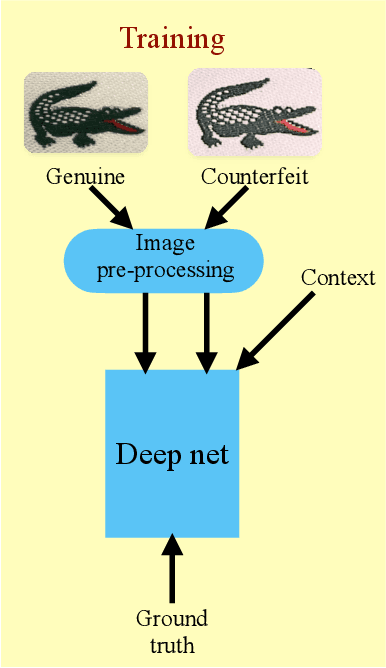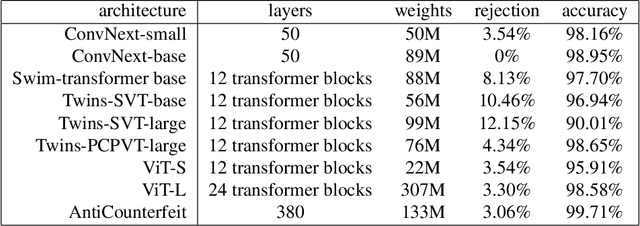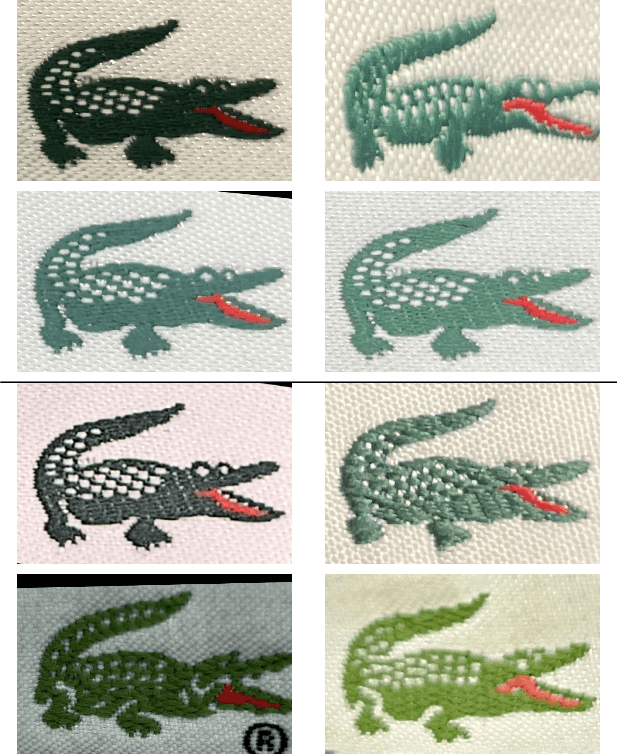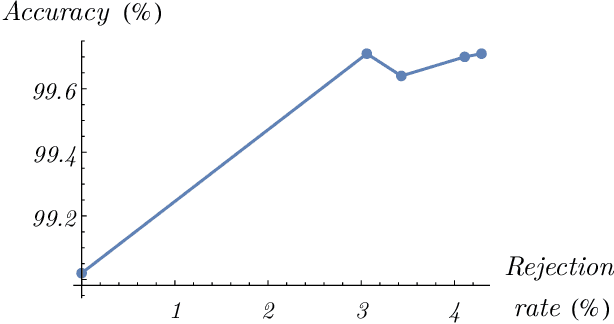David G. Stork
Deep neural network-based detection of counterfeit products from smartphone images
Oct 08, 2024



Abstract:Counterfeit products such as drugs and vaccines as well as luxury items such as high-fashion handbags, watches, jewelry, garments, and cosmetics, represent significant direct losses of revenue to legitimate manufacturers and vendors, as well as indirect costs to societies at large. We present the world's first purely computer-vision-based system to combat such counterfeiting-one that does not require special security tags or other alterations to the products or modifications to supply chain tracking. Our deep neural network system shows high accuracy on branded garments from our first manufacturer tested (99.71% after 3.06% rejections) using images captured under natural, weakly controlled conditions, such as in retail stores, customs checkpoints, warehouses, and outdoors. Our system, suitably transfer trained on a small number of fake and genuine articles, should find application in additional product categories as well, for example fashion accessories, perfume boxes, medicines, and more.
Extracting associations and meanings of objects depicted in artworks through bi-modal deep networks
Mar 16, 2022



Abstract:We present a novel bi-modal system based on deep networks to address the problem of learning associations and simple meanings of objects depicted in "authored" images, such as fine art paintings and drawings. Our overall system processes both the images and associated texts in order to learn associations between images of individual objects, their identities and the abstract meanings they signify. Unlike past deep nets that describe depicted objects and infer predicates, our system identifies meaning-bearing objects ("signifiers") and their associations ("signifieds") as well as basic overall meanings for target artworks. Our system had precision of 48% and recall of 78% with an F1 metric of 0.6 on a curated set of Dutch vanitas paintings, a genre celebrated for its concentration on conveying a meaning of great import at the time of their execution. We developed and tested our system on fine art paintings but our general methods can be applied to other authored images.
Computational identification of significant actors in paintings through symbols and attributes
Feb 04, 2021



Abstract:The automatic analysis of fine art paintings presents a number of novel technical challenges to artificial intelligence, computer vision, machine learning, and knowledge representation quite distinct from those arising in the analysis of traditional photographs. The most important difference is that many realist paintings depict stories or episodes in order to convey a lesson, moral, or meaning. One early step in automatic interpretation and extraction of meaning in artworks is the identifications of figures (actors). In Christian art, specifically, one must identify the actors in order to identify the Biblical episode or story depicted, an important step in understanding the artwork. We designed an automatic system based on deep convolutional neural networks and simple knowledge database to identify saints throughout six centuries of Christian art based in large part upon saints symbols or attributes. Our work represents initial steps in the broad task of automatic semantic interpretation of messages and meaning in fine art.
Recovery of underdrawings and ghost-paintings via style transfer by deep convolutional neural networks: A digital tool for art scholars
Jan 04, 2021



Abstract:We describe the application of convolutional neural network style transfer to the problem of improved visualization of underdrawings and ghost-paintings in fine art oil paintings. Such underdrawings and hidden paintings are typically revealed by x-ray or infrared techniques which yield images that are grayscale, and thus devoid of color and full style information. Past methods for inferring color in underdrawings have been based on physical x-ray fluorescence spectral imaging of pigments in ghost-paintings and are thus expensive, time consuming, and require equipment not available in most conservation studios. Our algorithmic methods do not need such expensive physical imaging devices. Our proof-of-concept system, applied to works by Pablo Picasso and Leonardo, reveal colors and designs that respect the natural segmentation in the ghost-painting. We believe the computed images provide insight into the artist and associated oeuvre not available by other means. Our results strongly suggest that future applications based on larger corpora of paintings for training will display color schemes and designs that even more closely resemble works of the artist. For these reasons refinements to our methods should find wide use in art conservation, connoisseurship, and art analysis.
 Add to Chrome
Add to Chrome Add to Firefox
Add to Firefox Add to Edge
Add to Edge